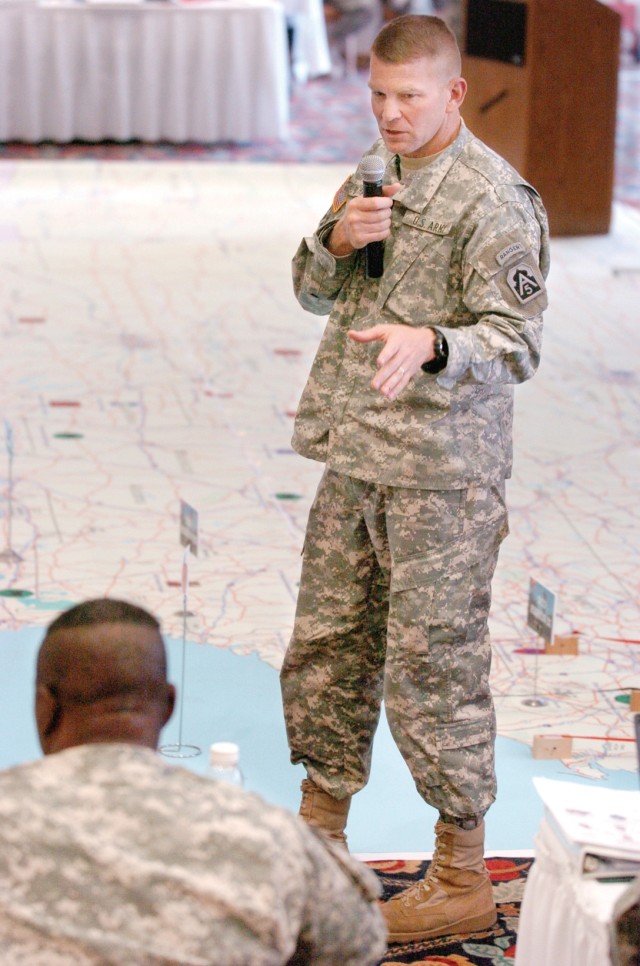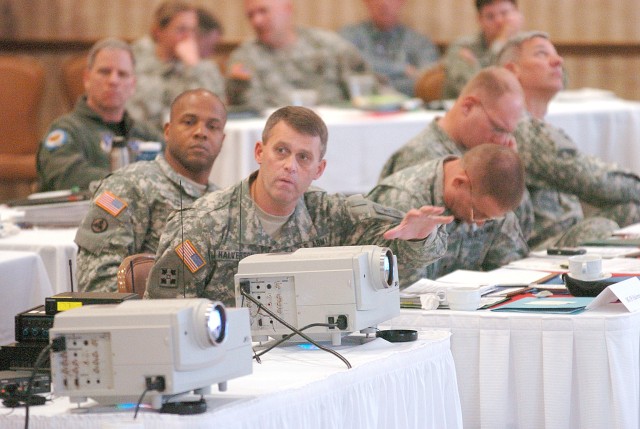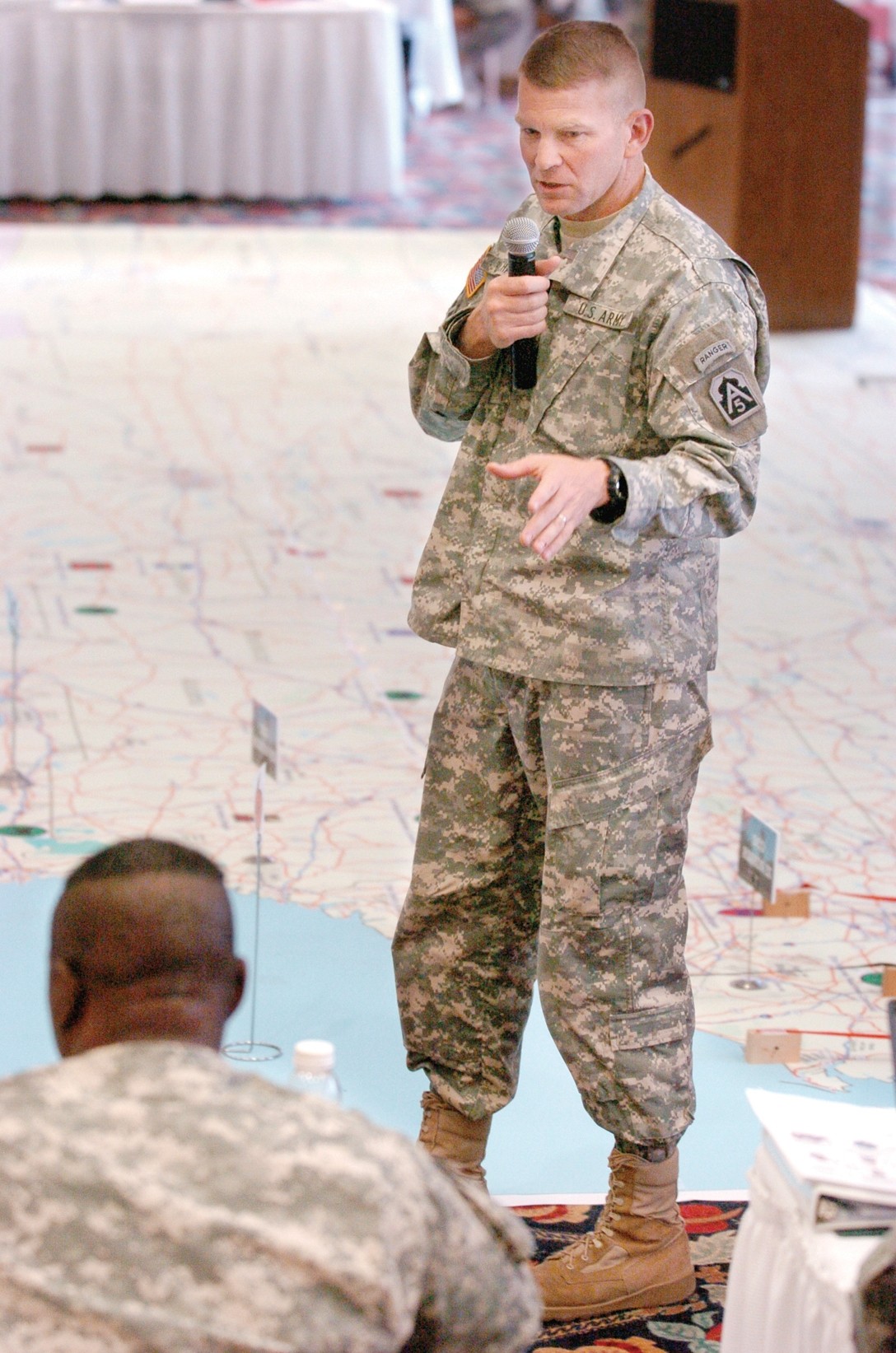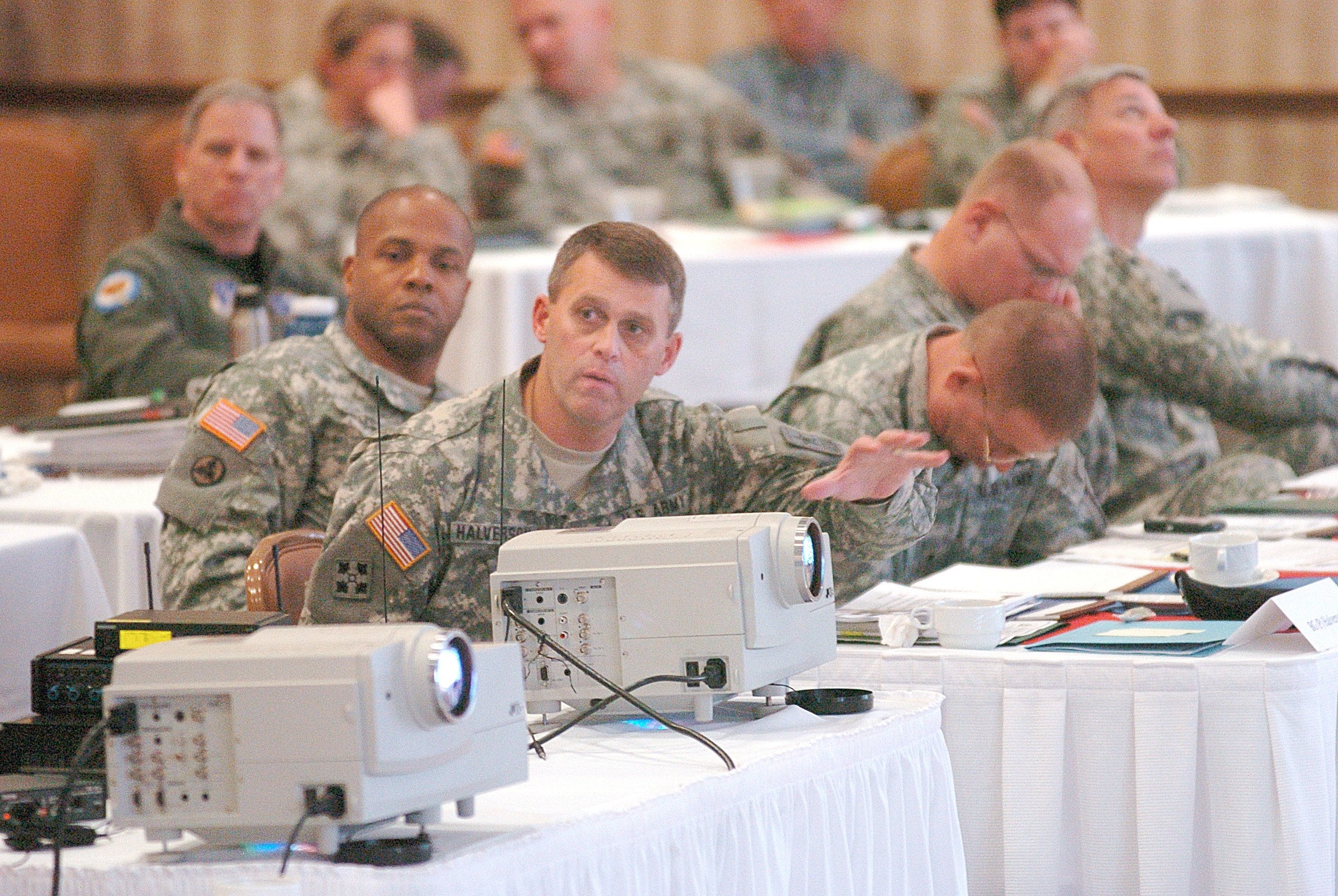More than 150 staff members from 60 government agencies huddled around a U.S. map the size of a racquetball court at Fort Belvoir, Va., to rehearse hurricane relief operations in a Rehearsal of Concept drill.
"Last year's drill included a lot of debates to try and work out procedures and make sure everyone was synchronized," said Brig. Gen. Randy E. Manner, deputy director of Operations, Readiness and Mobilization. "Now, we're doing final checks."
The second annual hurricane ROC drill hosted by the Army's Deputy Chief of Staff G3/5/7 came on the eve of what could be an especially active hurricane season. Seventeen named storms and nine hurricanes are expected this year, according to Colorado State University's Atmospheric Science department.
"Common operating picture" and "unity of effort" were phrases often used April 13, the last day of the three-day exercise. They describe the need for inter-agency cooperation through understanding of common processes.
"If we all speak the same language and do things in a similar way, we can jump to the scene of an incident and make things happen quickly," said Michael Parker, a Federal Emergency Management Agency federal coordinating officer.
<b>Plans</b>
The National Response Plan and the National Incident Management System are two plans created to avoid ambiguity when a natural disaster strikes. The NRP describes the steps each level of government must take if their resources become exhausted. The NIMS provides a framework to enable all levels of government to work together to effectively manage a catastrophe.
"Plans are good, but what you still need is excellent execution," Parker said.
<b>Preparedness</b>
One of the challenges the Army faced during hurricane Katrina was difficulty communicating with local, state and federal agencies via landline, cellular phones and radios. While the hurricane contributed to the landline and cellular issues, the Army's radios simply didn't "talk" to other agencies' radios. Manner said the state National Guards now have the proper communication equipment to mitigate that challenge.
FEMA is also preparing to evacuate pets for the first time. Thousands were left stranded after Katrina, but Parker said a pet is now viewed like someone with special needs.
"In today's society, they are family members," Parker said.
<b>Assets</b>
Army officials acknowledge their assets are stretched, but Manner insisted Soldiers from the National Guard and even the regular Army, if needed, are able to respond to a catastrophe in the continental United States.
"One thing people need to know is the Army will be there to safeguard the lives of our citizens," he said.
Some Army equipment will also be on standby, while other equipment will actually be moved to meet the potential needs of states, Manner added.
The Army participated in the National Hurricane Conference one week prior to the ROC drill and will have Army North Command representatives at Ardent Sentry '07, the final rehearsal drill during May 2007.




Social Sharing